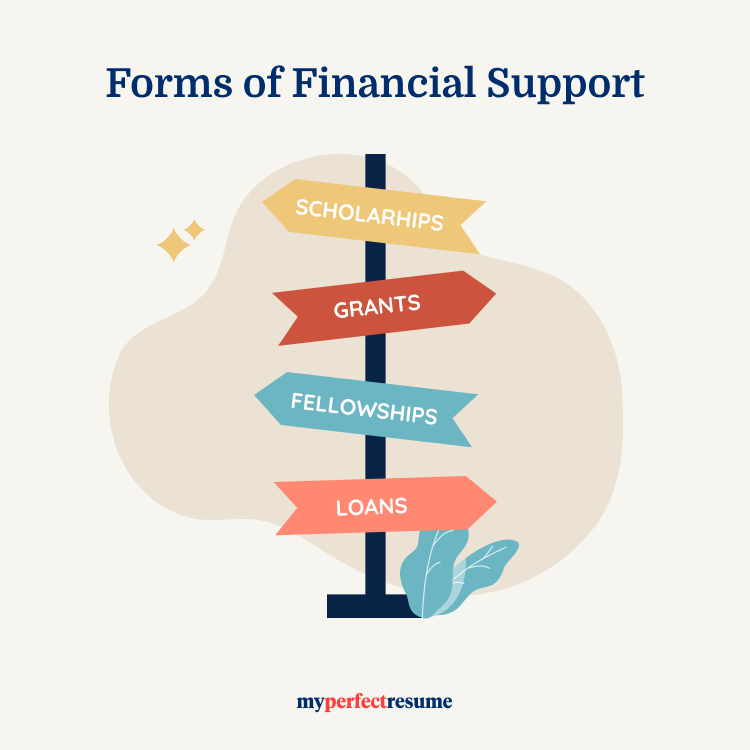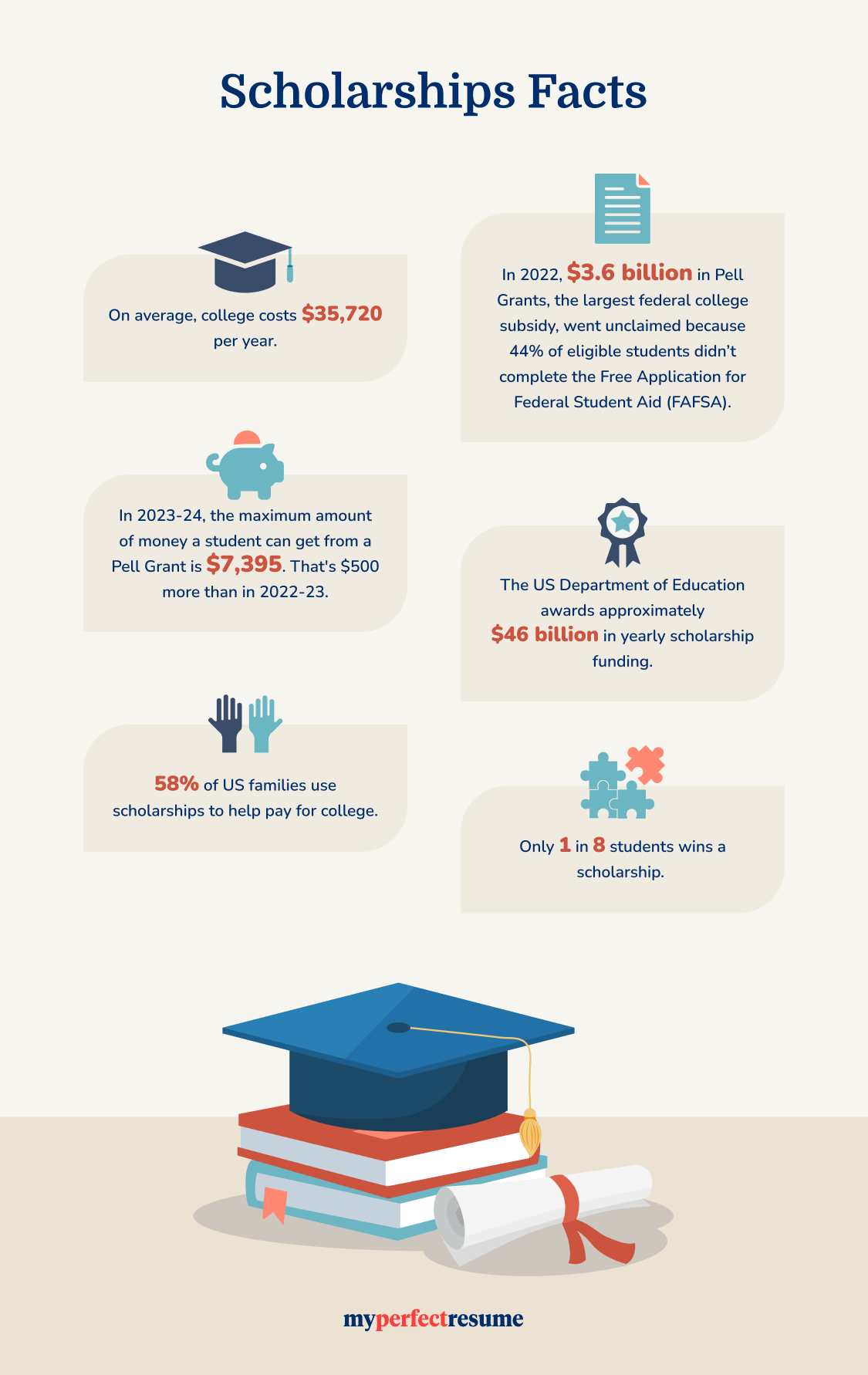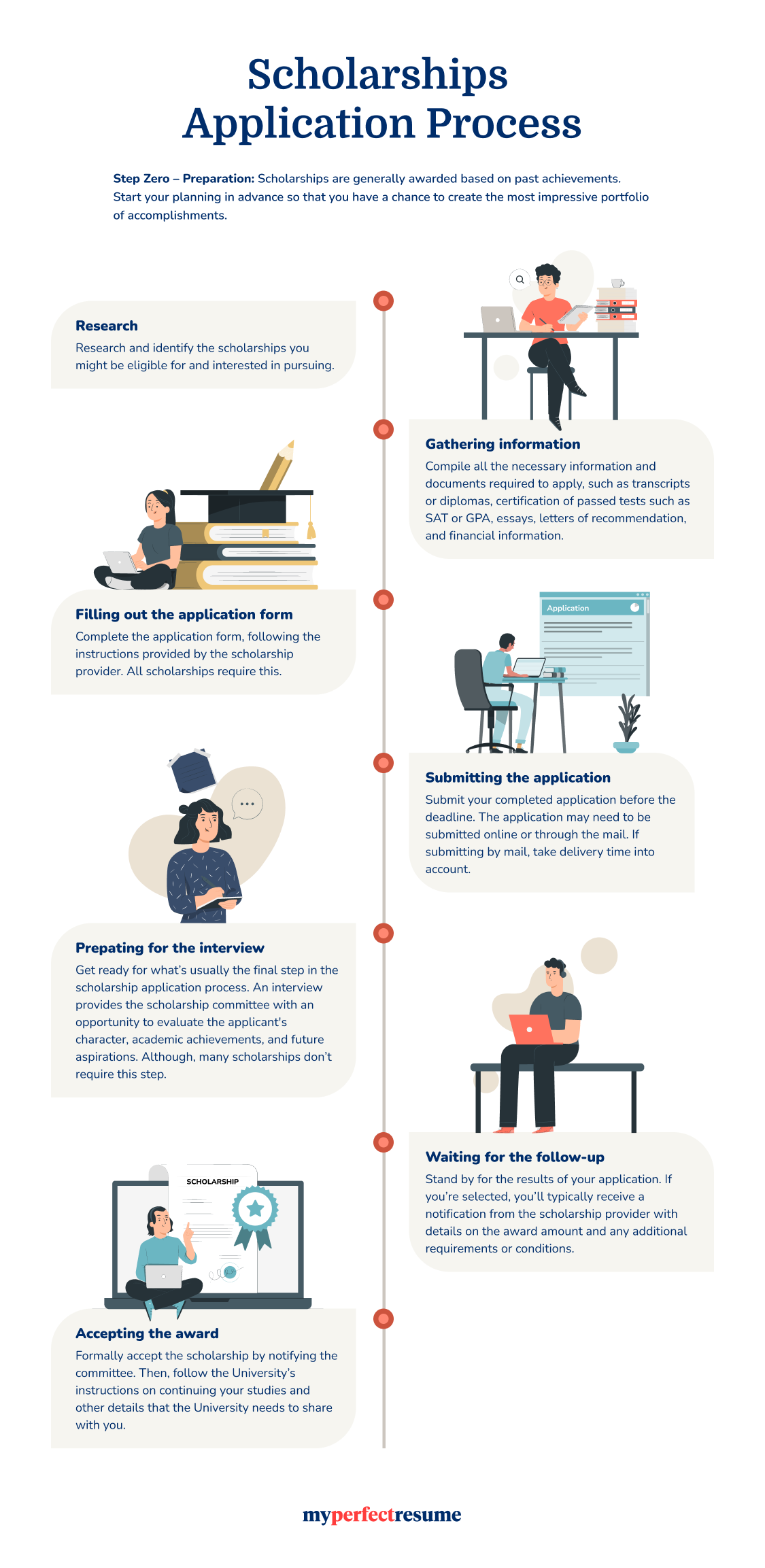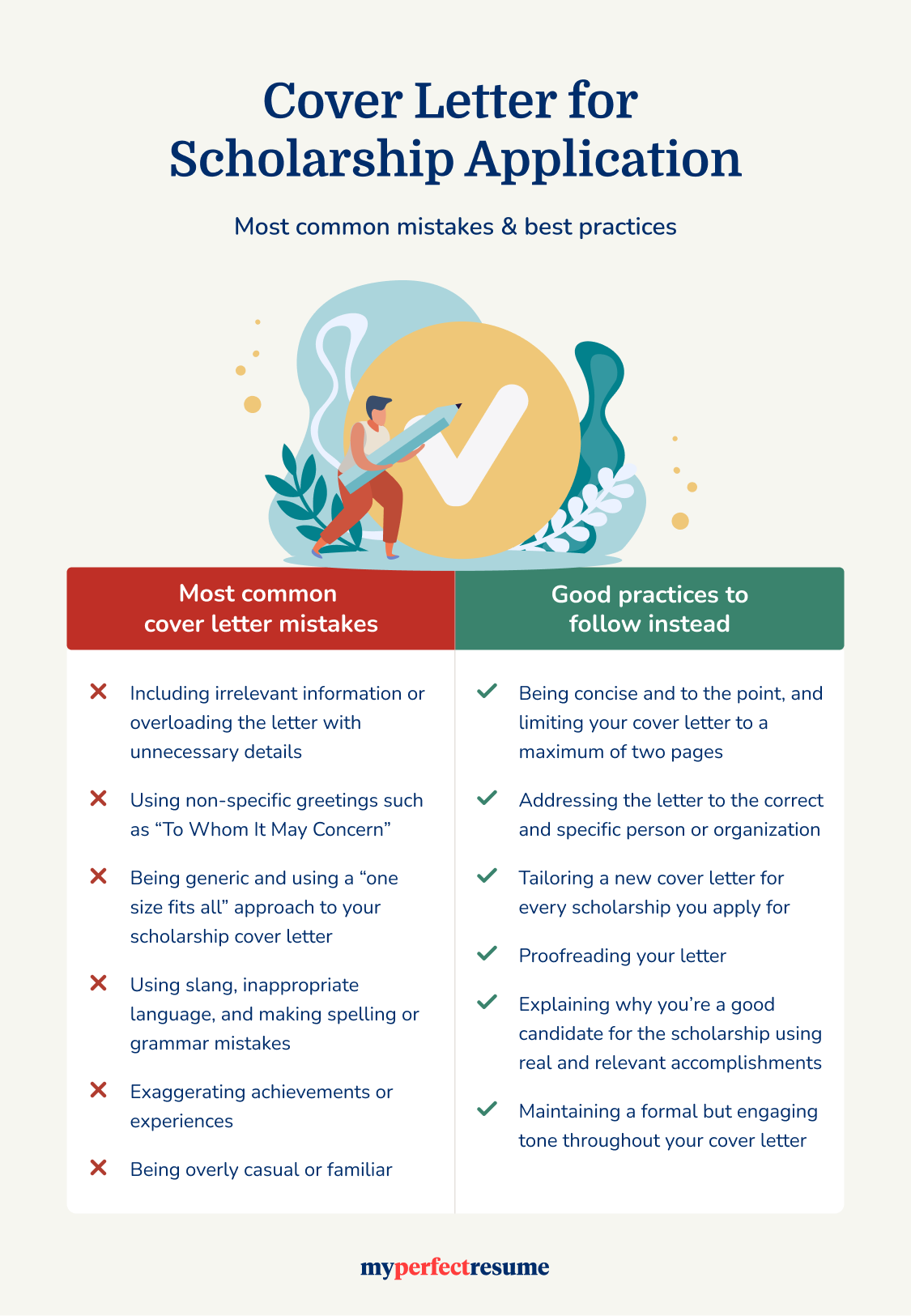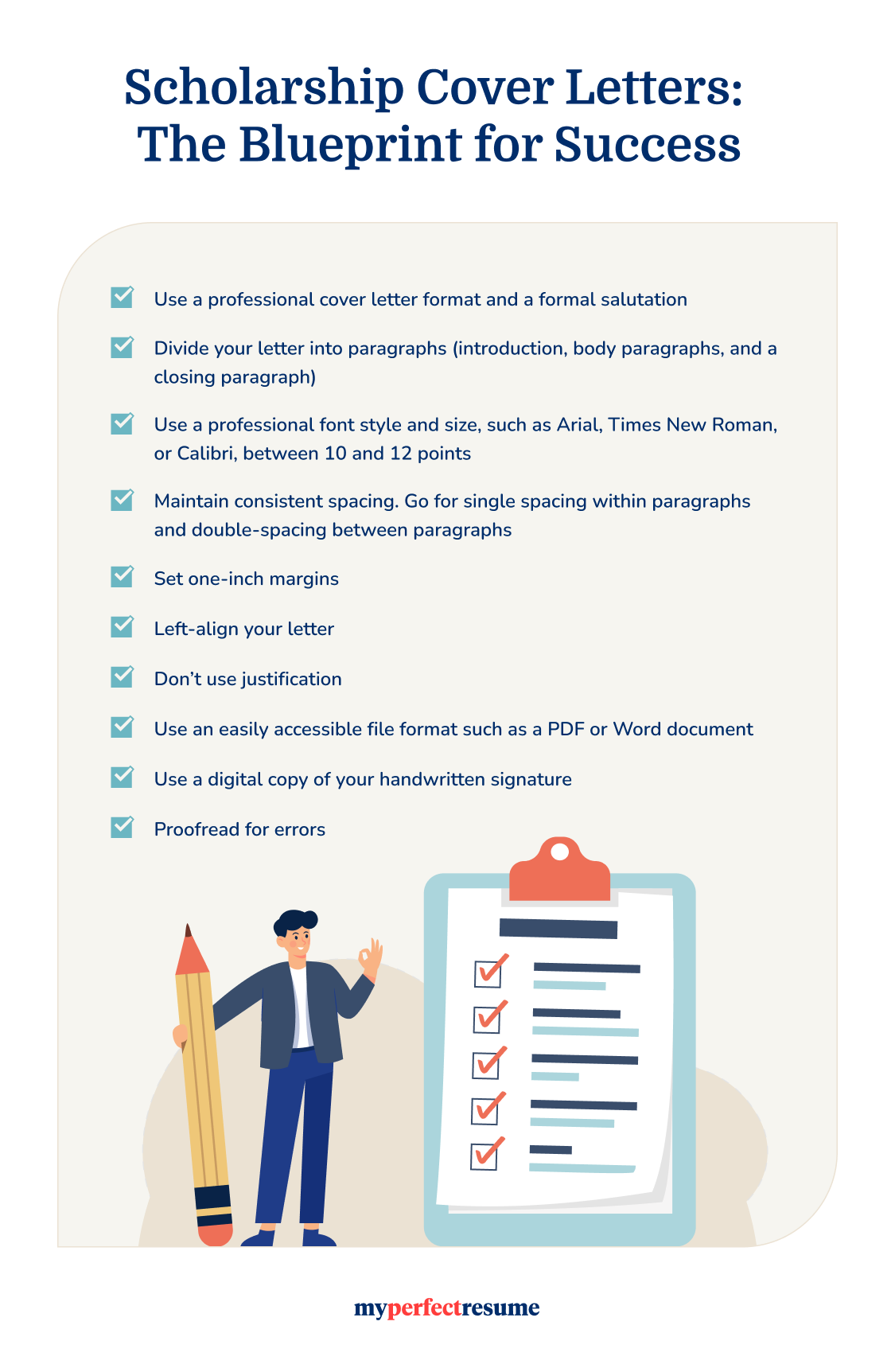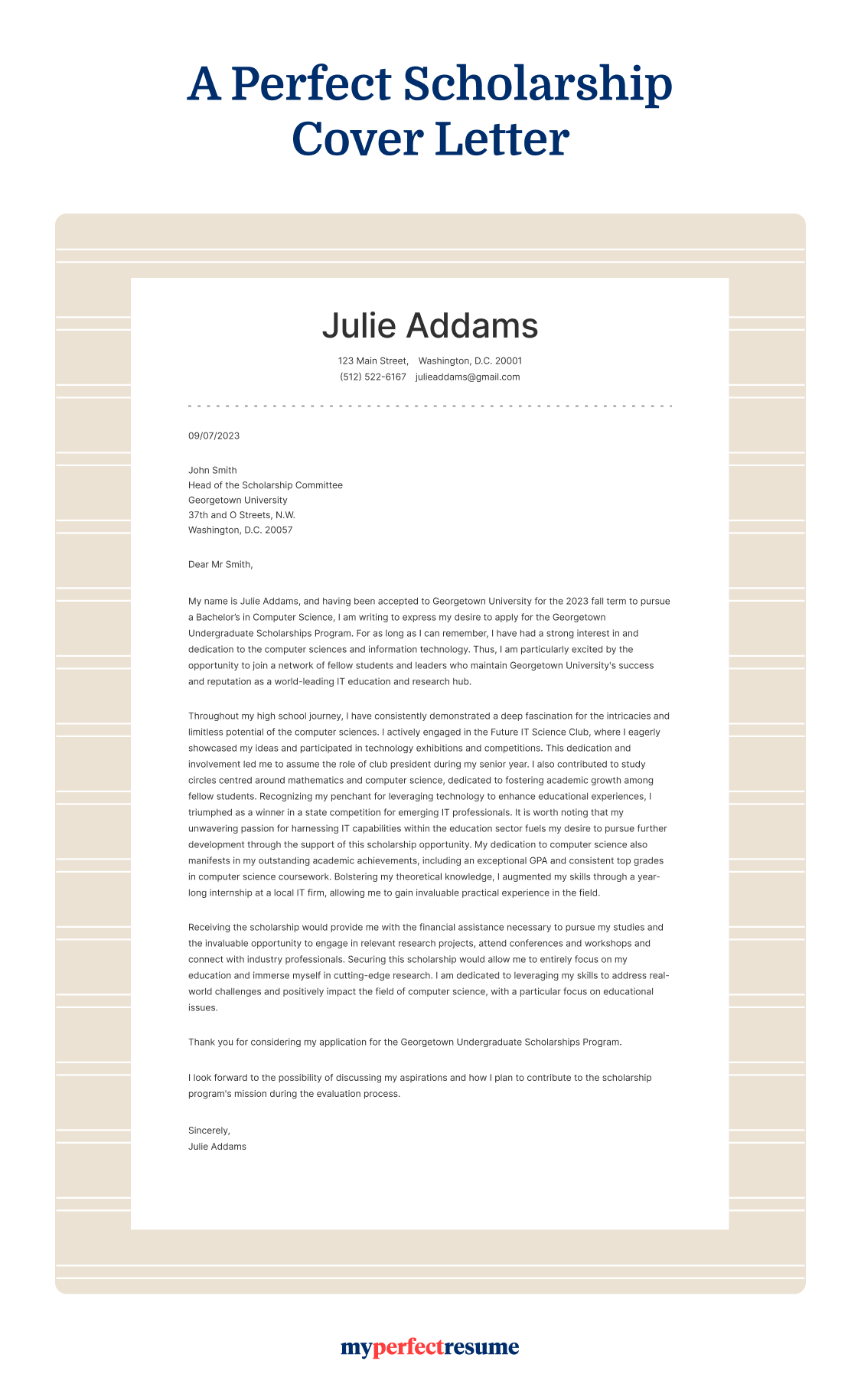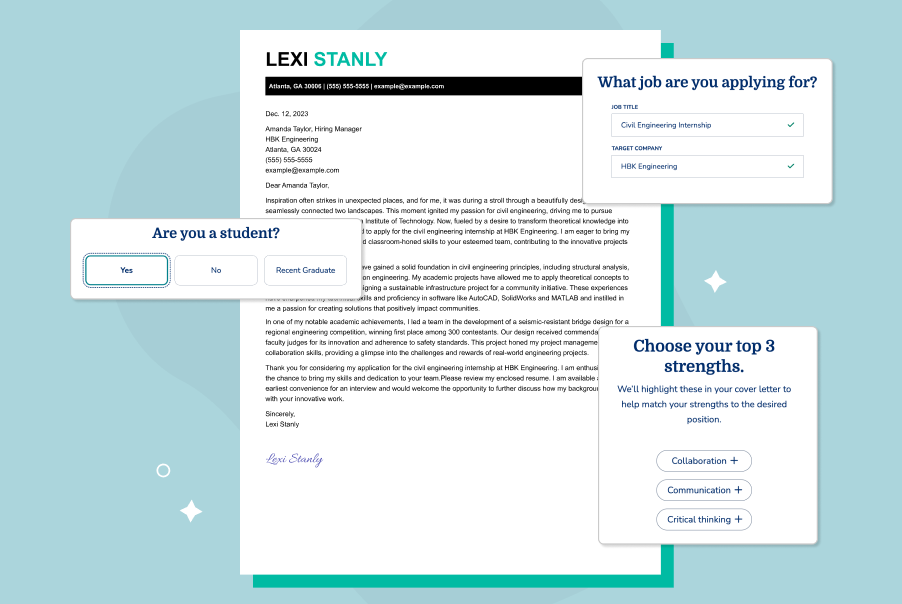Our customers have been hired at: *Foot Note
Applying for a scholarship may seem like choosing numbers on a lottery coupon.
You grasp the odds and carefully choose your numbers, knowing that the right combination could yield a grand prize.
But who knows if you’ll hit the jackpot.
However, unlike chance alone, getting a scholarship requires more than a mere dice roll. You must adopt a strategic approach and consider the unique tapestry of strengths, experiences and aspirations.
Together, we’ll unearth the parallels between securing your academic dreams and the art of selecting those elusive winning numbers. Join us as we uncover the secrets to crafting a winning scholarship application, navigating the landscape of opportunities and increasing your odds of securing the funds that could change your life.
An epic battle for that coveted opportunity starts now, and we’ll show you how to be on the winning side.
Scholarship, grant, or fellowship: What’s the difference?
The terms “scholarship,” “grant” and “fellowship” are often used interchangeably. However, they are separate forms of funding with different criteria and purposes. Let’s take a look at some short definitions to explain.
A scholarship is a form of financial assistance provided to individuals to support their educational pursuits. They’re usually awarded based on merit or other criteria, such as a particular talent or interest. Educational institutions, government bodies, private organizations, foundations, or philanthropic individuals typically offer scholarships. Unlike loans, scholarships do not need to be repaid.
Grants are funds from organizations, government agencies, foundations, or other bodies provided to support specific projects, initiatives, research endeavors, or individuals in various fields. Unlike scholarships, grants are not limited to educational pursuits and can encompass multiple disciplines, including scientific research, arts and culture, social initiatives, entrepreneurship and more. They can be categorized into different types, such as research grants, project grants, programmatic grants, or operating grants. Just like scholarships, they don’t have to be repaid.
Fellowships are similar to scholarships and grants. The term typically refers to financial support for postgraduate study or research, such as a doctoral degree or a research project. In addition to financial support, fellowships often include mentorship, training, networking opportunities and access to resources. Fellowships are usually awarded based on academic merit and research potential, and they may provide funding for tuition, living expenses, and research costs.
Student loans are another form of funding. These differ from scholarships and other types of financial support, as they require students to repay the borrowed money with interest after graduation. Repayment usually begins after a grace period following graduation or when the student drops below half-time enrollment.
These are just the basics. However, scholarships have many other considerations, such as the types of scholarships available.
Types of scholarships
There are various types of scholarships available to American students. They differ in many aspects, such as the criteria for eligibility, the amount of funding provided, the application process, and other terms and conditions. For example, some scholarships are based on academic merit, while others focus on athletic ability or community service.
Some scholarships provide full funding for tuition, fees and living expenses, while others provide only partial funding. In addition, the scholarship application process can vary widely, from simply filling out a form to submitting essays, letters of recommendation and other supporting materials. Furthermore, some scholarships are renewable for multiple years, while others are one-time awards.
Here are some of the most popular scholarship options available:
- Academic (or Merit) Scholarships: Awarded based on academic achievements, such as high grades, standardized test scores, or exceptional talent in a specific field.
- Athletic Scholarships: Awarded to student-athletes who excel in sports. Colleges and universities offer them and can cover tuition fees, accommodation and related expenses. But watch out. Athletic scholars must consistently achieve academic achievements to continue receiving funding.
- Need-based Scholarships: Determined by financial situation rather than merit and offered to people whose financial situation doesn’t allow them to continue learning.
- Ethnicity-specific Scholarships: Targeting students from specific ethnic or cultural backgrounds. They aim to promote diversity and provide educational opportunities to underrepresented groups.
- Field-specific Scholarships: Offered to students pursuing studies in a particular field or discipline, such as STEM (Science, Technology, Engineering and Mathematics), humanities, business, or health care. Organizations and institutions interested in supporting students in those fields often sponsor these scholarships.
- Community Scholarships: Recognizes students who have significantly contributed to their communities through volunteer work and community service.
- Creative or Artistic Scholarships: Supports students with exceptional talent in areas such as visual arts, performing arts, creative writing, or music. They are often awarded based on portfolio reviews, auditions, or other forms of artistic evaluation.
- Government Scholarships: Provided by governmental bodies to support students in pursuing their educational goals.
- Military Scholarships: Specifically designed for individuals who are serving or have served in the military, as well as their dependents.
- Unique Scholarships: These go beyond the typical academic and merit-based awards and target individuals with unique qualities, backgrounds, talents, or pursuits. They may cover hobbies and interests like video gaming or cosplay.
With so many options, there’s a scholarship out there for everyone.
But enough definitions. Let’s look at something more interesting.
Scholarships facts
Scholarships have life-changing potential, but you should learn the numbers behind them. The following statistics provide some fascinating insights.
- On average, a college education costs $35,720 per year.
- In 2022, $3.6 billion in Pell Grants, the most significant federal college subsidy, went unclaimed because 44% of eligible students didn’t complete the Free Application for Federal Student Aid (FAFSA).
- In 2023-24, a student's maximum amount of money from a Pell Grant is $7,395. That’s $500 more than in 2022-23.
- 58% of U.S. families use scholarships or subsidies to help pay for college.
- The US Department of Education awards approximately $46 billion in scholarship funding yearly.
- Only 1 in 8 students wins a scholarship.
Scholarship application process
The application processes can vary depending on the type of scholarship and the institution that pays out the money. However, each will involve a few basic steps. Here’s how to do it right:
Step Zero – Preparation: Scholarships are generally awarded based on past achievements. So start working on your portfolio of achievements early. Without notable accomplishments to showcase, your chances of securing financial aid may be limited or close to none. Winning a scholarship is a marathon, not a sprint.
Here are some steps you can take:
- Maintain a solid academic record. Most scholarships require a minimum GPA, so focusing on learning and achieving good grades is essential to win a scholarship. Additionally, take challenging courses, participate actively in class, and seek opportunities for academic enrichment.
- Get involved in extracurricular activities. Participate in activities that align with your interests and goals, such as sports teams, clubs, volunteer work and internships. These activities showcase your passion and dedication, leadership abilities, teamwork and time management skills — all essential skills for a scholarship.
- Seek leadership positions within your school, community, or through extracurricular activities. Taking on leadership roles demonstrates your ability to take initiative, make decisions and positively influence others.
- Get involved in community service projects and volunteer work. Document your community service hours, responsibilities and any notable achievements or impact you have made.
- Build relationships with teachers and mentors. They are like guiding stars in your academic journey and possess a wealth of knowledge and experience that can propel you toward scholarship success. By nurturing these connections, you cultivate a support system that provides valuable guidance and advice and becomes a powerful network of advocates rooting for your triumphs. Engage in thoughtful conversations, seek their insights, and showcase your dedication and potential.
- Ask for recommendation letters. Letters of recommendation are testaments to your character, achievements and potential, written by those who have witnessed your growth and excellence firsthand. When seeking recommendation letters for a scholarship, approach your mentors, teachers, supervisors, or employers. You can make their job easier by telling them what you’d like them to highlight. For example, for a letter from a volunteer work supervisor, ask them to write about your personal contribution to the organization.
Recommendation letters are essential for students when applying for scholarships because they objectively assess the person’s abilities, character and motivation. Scholarship committees often seek external validation of a student’s potential. Recommendation letters provide an independent viewpoint and reinforce the student’s claims. They help validate the person’s achievements and enhance the credibility of their scholarship application.
- Prepare for standardized tests such as SAT or ACT scores. The higher your score, the higher your chances of securing a competitive scholarship.
- Write strong, tailored essays. Many scholarship applications require essays or personal statements. Take the time to craft thoughtful and compelling content that showcases your unique qualities and experiences. And tailor your writing to each scholarship application.
- Take care of your personal development. Pursue opportunities for self-improvement, such as attending workshops, seminars, or online courses. These prove that you are committed to growth and lifelong learning.
Pro tip:
Unlocking the door to scholarship success requires a strategic approach and a dash of tenacity. It’s not just about hitting the books and crossing your fingers; it’s about seizing every opportunity to craft an achievement portfolio that shines like a constellation of your remarkable talents. Starting early in your pursuit of a scholarship and embracing a proactive mindset ensures that dedication meets opportunity.
That’s the preparation phase. Next, you’ll need to tackle research, identifying suitable scholarships and preparing paperwork.
Follow these steps to get a scholarship
- Research: Identify the scholarships you might be eligible for and interested in pursuing. Check some scholarship search engines, e.g., scholarship.com or fastweb.com.
- Gather information: Compile all the necessary information and documents required to apply for the scholarship, such as transcripts or diplomas, certification of passed tests such as SAT or GPA, essays, letters of recommendation and financial information.
- Fill out the application form: Complete the application form, following the instructions provided by the scholarship provider. All scholarships require this. Ensure that you provide all the necessary information and supporting documents required.
- Submit the application: Submit your completed scholarship application before the deadline. The application may need to be submitted online or through the mail. If submitting by mail, take delivery time into account.
- Prepare for the interview, if needed: Prepare for the final step in the scholarship application process. An interview allows the scholarship committee to evaluate the applicant’s character, academic achievements and future aspirations. However, many scholarships don’t require this step. Still, if given such a chance, don’t waste it
- Wait for the follow-up: Stand by for the results of your scholarship application. If selected, you’ll typically receive a notification from the scholarship provider with details on the award amount and any additional requirements or conditions. Expect email, postal mail, or a phone call.
- Accept the award: Formally accept the scholarship by notifying the committee. Sometimes, you might be obliged to write a formal acceptance or thank-you letter. Then, follow the instructions for using the money and other details the donor shares.
Pro tip:
Keep copies of all scholarship acceptance-related documents for your records, including acceptance letters, agreements, or any other correspondence with the scholarship provider. These documents may be helpful for future reference or if any issues arise regarding the scholarship.
That’s the application process. But there’s one aspect that bears covering in more detail. Get it wrong and you can kiss goodbye to your chances of success. What is this crucial step, you ask? The scholarship application letter.
How to write a scholarship cover letter
Are you ready to take one of the most critical steps toward achieving your academic dreams?
A scholarship cover letter is a formal document that accompanies a scholarship application. It provides an opportunity to introduce yourself, highlight your qualifications, and express your motivation for applying for the scholarship.
The cover letter allows the donor to assess the scholarship applicant’s fit with the scholarship program, evaluate their motivation and purpose, differentiate among candidates, and ensure that the scholarship is awarded to deserving individuals who will positively contribute to the institution’s goals. It helps the money provider make informed decisions and select candidates who demonstrate their potential to succeed and make a meaningful impact through the scholarship opportunity.
With a well-crafted cover letter, you can showcase your unique strengths, experiences and accomplishments, setting yourself apart from the other applicants vying for the same scholarship. Think of it as your chance to make a lasting impression on the selection committee and persuade them that you are the most deserving candidate.
Writing such a pivotal document can be intimidating. But with the proper knowledge and resources, crafting a perfect cover letter for a scholarship application is a piece of cake.
Let’s start with common scholarship cover letter mistakes and good practices.
- Forget to tailor your letter to the scholarship. One of the biggest mistakes is failing to tailor the letter to the specific scholarship being applied for. Researching the scholarship and organization offering is crucial, just as ensuring your letter speaks directly to the requirements and criteria.
- Be concise and to the point. Keep your letter brief and focused, but address all the necessary issues. Aim for a cover letter that is at most two pages.
- Address your scholarship letter to the correct and specific person or organization. It’s important to know who will review your application; otherwise, you may come off as unprofessional. Never write your letter to “all whom it may concern.”
- Show your passion. Prove that you love what you’re doing and that your work has a purpose while being focused on tangible goals.
- Proofread your letter. Ensure your letter is well-written, professional, and free of spelling and grammatical errors.
- Explain why you’re a good candidate for the scholarship. Highlight your achievements, academic record and relevant experiences demonstrating your eligibility for the scholarship. Be specific. Use numbers, percentages and tangible proof of your accomplishments.
- Follow instructions. Some institutions provide guidelines to help students with cover letter writing. Make sure to address all the requirements and criteria specified there.
- Maintain a formal but engaging tone throughout your cover letter to demonstrate your professionalism and enthusiasm for the opportunity.
- Forget to tailor your letter to the scholarship. One of the biggest mistakes is failing to tailor the letter to the specific scholarship being applied for. Researching the scholarship and organization offering is crucial, just as ensuring your letter speaks directly to the requirements and criteria.
- Include irrelevant information or overload the letter with unnecessary details. Keep your cover letter focused and to the point.
- Be generic and use a “one size fits all” approach. Never do that. Tailor your letter to the scholarship and the organization. Use templates only as a source of inspiration.
- Be overly casual or familiar. Keep your tone professional and respectful.
- Use slang and inappropriate language, and make spelling or grammar mistakes. Always use clear and professional language. Proofread for errors.
- Exaggerate achievements or experiences. Be truthful and accurate in your representation of yourself.
- Forget to highlight relevent accomplishments. A common mistake is not adequately highlighting your accomplishments, such as academic achievements, extracurricular activities, community service, or work experience
Scholarship cover letter in practice
Now, let’s take a look at the structure. Remember to use a professional cover letter format and a formal salutation. Divide your letter into paragraphs for clarity and readability. Generally, a cover letter includes an introduction, body paragraphs and a closing paragraph.
Make sure to cover all the following points.
Introduction
- Applicant’s contact information
[Your Name]
[Your address]
[Your phone number]
[Your email address]
- Date
- The scholarship organization’s contact information
[Scholarship organization name or specific recipient name]
[Organization address]
[Organization phone number]
- Formal welcome
(Dear [Mr./Ms. Recipient’s name] / [Scholarship Committee])
Development
- Paragraph 1: State the purpose of a cover letter.
- Paragraph 2: Provide relevant and most significant achievements, related skills and experience.
- Paragraph 3: Show your passion for your field and scholarship, justify why you want this scholarship, why you deserve it and why you’re the best choice.
Ending
- Call to action (CTA): Highlight that you’re waiting for the committee’s response and are open to further discussion.
Regards
(Sincerely + your name)
Use correct formatting
- Use a professional font and font size. Choose a clean and legible font such as Arial, Times New Roman, or Calibri. Use a font size between 10 and 12 points to ensure readability.
- Maintain consistent spacing. Use single spacing within paragraphs and double spacing between paragraphs.
- Set one-inch margins all around. Doing so gives your scholarship letter a clean and uncluttered look and provides plenty of white space, making it easy to read.
- Left-align your scholarship letter. This is a standard practice for business letters.
- Don’t use justification. It’s against the rules of business letter formatting.
- Use a professional file format. Save your cover letter as a PDF or Word document to ensure compatibility when submitting it electronically.
- Go beyond by using a digital copy of your handwritten signature.
- In the end, proofread for errors! Not just once, but preferably two or three times. Each time, you will probably be able to find new mistakes you previously missed.
Pro tip:
Prepare your scholarship cover letter in advance so that you don’t feel time pressure. After writing it and doing the first round of corrections, put it aside for a day. Allow your mind to rest, granting it a respite from the text. Give yourself the luxury of time so that fresh ideas may flow effortlessly upon your return, and your gaze may deftly identify any lurking misspellings or formatting anomalies.
Now you’re ready to put theory into practice. Next, we’ll look at a well-written example scholarship cover letter and break it down step-by-step.
No one-size-fits-all cover letter template or magical formula guarantees success for your scholarship cover letter. Why, you may ask? Because every applicant is unique. People differ in their passions, accomplishments, academic interests and aspirations. That’s why writing a scholarship cover letter requires self-reflection.
Writing a cover letter tailored to your achievements and the scholarship you’re applying for is essential. But to get you started, we’ve prepared a sample to inspire you.
Scholarship cover letter sample
Here’s a scholarship cover letter from Julie Addams, who's passionate about computer technology and has worked hard to earn her undergraduate scholarship.
What this scholarship cover letter sample does right
Paragraph 1: Powerful introduction, straight to the point. The scholarship applicant introduces herself and her intention to apply for the specific scholarship program. The text provides supporting information about Julie’s interest in computer science and their excitement about joining the University. It briefly restates the applicant’s enthusiasm and ties it back to the scholarship opportunity.
Paragraph 2: The content of this scholarship letter effectively showcases the applicant’s commitment to computer science, presenting specific experiences, achievements and passion. It covers involvement in school activities, academic performance, and practical training. The structure allows for a clear and coherent presentation of qualifications, making the writer a strong candidate for consideration by the scholarship committee.
Paragraph 3: The text follows a clear and concise structure, presenting the benefits and opportunities that receiving the scholarship would provide. The subsequent discussion of engaging in research projects, attending conferences and workshops, and connecting with industry professionals demonstrate the scholarship applicant’s ambition to go beyond classroom learning and actively participate in the broader academic and professional community. This conveys Julie’s commitment to personal and intellectual growth in a specific field of interest.
The text also presents the applicant’s dedication to making a positive impact in computer science, with a particular emphasis on educational issues. This shows a precise alignment between the scholarship applicant’s goals and the values of the scholarship program. Julie portrays herself as proactive and socially conscious, intending to leverage education and skills to address real-world challenges.
Ending: Again, straight to the point. The structure and content of the text effectively convey the applicant’s gratitude, anticipation and alignment with the scholarship program’s mission. A polite and thankful tone creates a positive impression and demonstrates the applicant’s professionalism and appreciation.
Fair Use Statement
Feel free to share our findings. If your audience is interested in this information, you can share it for noncommercial reuse. In return, we ask that you link to this page, so your readers can view the entire resource.
About MyPerfectResume
MyPerfectResume Resume Builder with professional templates is designed to help job seekers elevate their careers. The easy-to-use platform was created to eliminate the hassle of resume writing, offering professionally written examples, free expert tips, step-by-step guidance to make a resume, and valuable interview advice to create an outstanding job application effortlessly. Since 2012, MyPerfectResume's Resume Builder has helped more than 11 million job seekers create their perfect resumes online. Its comprehensive employment surveys have been featured in Forbes, Yahoo! Finance, CNBC, Newsweek, USA Today, BBC, Workable, and more. Stay connected with MyPerfectResume’s latest Facebook, LinkedIn, Instagram, X, and Pinterest updates.
FAQ
How do I find scholarships that I am eligible for?
Research online scholarship databases, check with your school’s financial aid office, and explore local organizations, community groups, and professional associations. Explore online resources such as scholarships.com, fastweb.com, or cappex.com.
What are the criteria used by scholarship committees to evaluate applicants?
Scholarship committees evaluate applicants based on academic achievements, leadership potential, community involvement, personal qualities, and alignment with the scholarship’s goals and values.
How can I increase my chances of winning a scholarship?
To increase your chances, focus on maintaining strong academic performance, actively engage in extracurricular activities and community service, tailor your applications to each scholarship, and seek additional personal and professional growth opportunities.
Can I apply for multiple scholarships at the same time?
Yes, you can apply for multiple scholarships simultaneously. Nevertheless, it is always a good idea to check the scholarship regulations.
What are the deadlines for scholarship applications?
Scholarship deadlines vary, so it is essential to carefully note the application deadlines for each scholarship you plan to apply for.
How do I handle scholarship interviews or personal interviews?
Prepare for scholarship interviews by researching the organization, practicing common interview questions, and reflecting on your goals and experiences. Dress professionally, maintain good eye contact, and articulate your answers confidently and concisely.
What are some scholarship interview questions I should expect?
Some of the most popular scholarship interview questions include:
- Tell me about yourself.
- What are your aspirations relating to your career?
- Why do you feel you are the right person for the scholarship?
- Who is your role model?
- What has been one of your most outstanding achievements?
- What motivates and inspires you in your academic pursuits?
You may face some trickier questions like:
- How do you envision using your education to make a difference in society?
- Discuss any specific challenges or obstacles you have faced in your educational journey and how you have overcome them.
- Explain any financial need you may have and how the scholarship would alleviate it.
How we reviewed this article
Since 2012, we have helped more than 11 million job seekers with our user-friendly tools and career advice articles. We have a rigorous editorial process to ensure that our content is helpful, accurate and free of errors. Explore our recent employment studies and press coverage, and discover why our certified career experts are a trusted source for professionals worldwide.
Sources
- Buffett, J., “Sample Cover Letter for Scholarship Application in 2022”
- Federal Student Aid, “How much money can I get from a Federal Pell Grant?”
- National College Attainment Network for Tableau Public, “Pell Dollars Left on the Table”
- Scholarship America, “Make the Most of Aid Opportunities: Billions of Dollars Are Left on the Table”
- Scholarships.com, “Student Resources”
- ThinkImpact, “Average College Student Spending”
- Woodward, M., “U.S. Scholarship Statistics: The Latest Data, Facts And Costs”
Our customers have been hired at:*Foot Note

